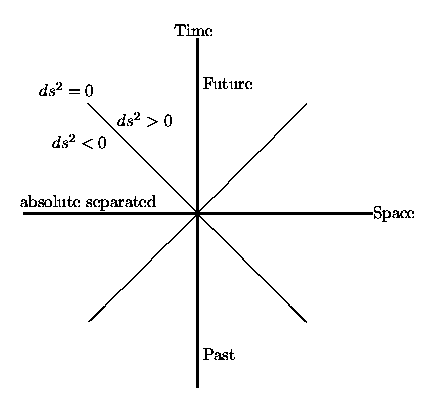|
|
|
|
|
|
|
|
|
Contents
SPECIAL RELATIVITYWhen Einstein proposed his ideas about the nature of light in 1905 the world of physic changed fundamentally. He proposed that the speed of light is always a fix constant independent of the observer and that the measurements of time and distance are the relative properties. The transformation of physical properties from one coordinate system to another needs to incorporate the relative speed between the two systems w.r.t. the light speed. The mathematical methods were developed by Lorentz. Thus, the Lorentz transformation has to be used when transferring data from one observer to another observer. There exist nothing like an absolute time or space reference system like the classical physics assumed. Later these ideas are summarized in Einstein's Theory of Special Relativity. The fundamental principle that The position of an object is not described by 3 coordinates (x,y,z) but by 4 coordinates (x,y,z,ct) with c is the velocity of light and t is the time. Thus time and space are not separated but are connected by the speed of light. Minkowski Metric
In flat (Euclidean) space, bodies move in a background of space and time.
Newton called it absolute space and absolute time.
Einstein changed this view radically in 1915 when he completed his general
theory of relativity which resulted in a unified 4-dimensional space-time.
All distances along a world line are called separations, and they
are measured by the metric:
This metric defines flat Minkowski space-time, and is much like Newtons absolute space plus a time dimension (note the sign of the time is negative). The World LineThe separation defines the allowed kind of world line which can be timelike, spacelike or lightlike. The following space-time diagram sums it up: 
Exotic MatterThe normal matter follows timelike paths. Light quants follow lightlike paths. Normal matter can never reach the speed of light. Whereas, light always runs with the same speed, independent of the observer coordinate systems, i.e. the observer's speed. Nevertheless, all the equations hold when switching signs. Thus, some propose Tachyones which follow spacelike paths. Such matter will have always a speed above the speed of light and can never be slowed down to rest. |